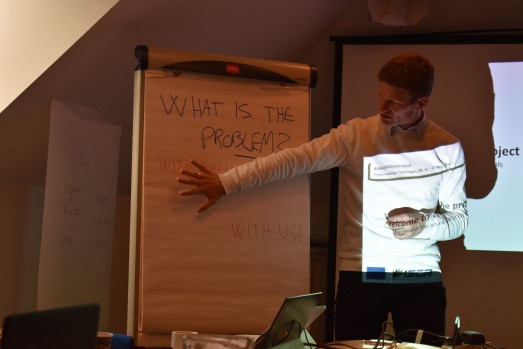ActiveVoice partners gather best practices to develop new toolkit for smart advocacy
29/05/2017

ISCA’s ActiveVoice project partners gathered in Copenhagen this month to embark upon a common challenge: to create a toolkit for grassroots sport organisations to become better at advocacy.
As many grassroots sport organisations are starting to grasp the idea that they can use advocacy to gain support for their activities, the ActiveVoice project partners noted that there needs to be more field-oriented tools based on best practices from the sport-for-all sector.
Elina Baltatzi from the European Cyclists’ Federation noted that there is a need for general guidance that covers basic questions such as why organisations should engage in advocacy, what they can do and how they can do it.
She added that local organisations need to understand how advocacy building supports their work as well as their local community.
HEPA-oriented organisations need to understand that advocacy building needs its own monetary resources and time – it is not a side activity that happens naturally, Baltatzi explained.
Assembling the essential toolbox for advocacy
Pauline Harper from EPODE International Network noted that today the capacity level in many supporting organisations, such as universities, is comparably high and existing research would offer good basis for new and innovative solutions. However, since many grassroots organisations lack knowledge or experience on how to use this data to build their case, their ideas are often left unsaid.
She added that organisations need “translated” scientific proof to back up their ideas, and that key facts need to be served in an easy-to-grasp form. Videos, infographics, for example, can be amplified through marketing and social media.
It’s a two-way street: members want to know more about evaluation (impact, cost-effectiveness), how and which partners to choose, and what scientific evidence is already there, Matthew Philpott from Healthy Stadia noted.
Saska Benedicic Tomat from ISCA stressed that this is exactly why local organisations need a simple and easy-to-use toolkit. The project partners agreed that it needs to be easily shareable, too. Therefore, a feasible solution would definitely have a digital feature and include sample templates.
In order to develop practical and effective toolkits, the advocacy builders should look outside the box, Philpott and Harper noted. Good projects are built on good practices and the sport for all community would learn a lot from economic and business strategies, they said.
Mapping the field
Mogens Kirkeby, President of ISCA, explained that in order to fundamentally understand the advocacy game, one needs to become oriented with their field of influence, i.e local sport communities are functioning under the influence of their mayor or city government. He noted that the said person or organisation needs to be on board to guarantee successful advocacy building.
As Pauline Harper put it, "advocacy building is more powerful once it has a hero – a health minister of sorts that has direct power."
Nevertheless, even without a specific person in mind, all project partners are already standalone key figures in the network and they have formed a steering group to implement new good practices. The ActiveVoice project thus gathers relevant tools and resources that will help enhance organisations’ influence on physical activity policy and make their advocacy efforts more effective overall.
The project’s EU partners have extensive experience in advocacy at an EU level. During the project, they will engage with their member associations (the project’s national partners and beyond) to deliver capacity building and facilitate alliance creation and specific advocacy interventions on national and local levels.
Follow the project’s process and be the first to access the new toolkit at www.activevoice.eu.
Posted on 29/05/2017 by

